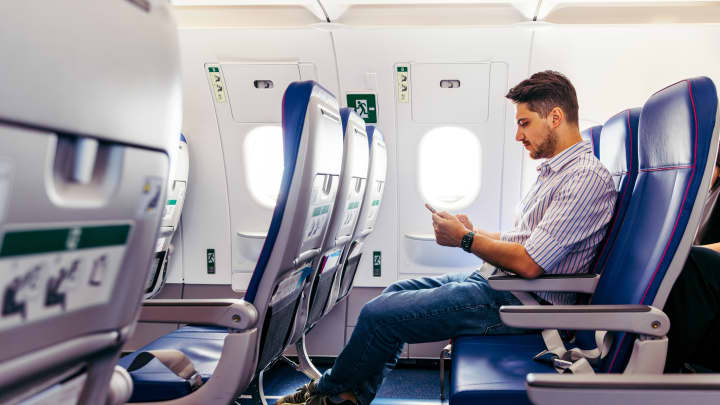Since ChatGPT’s big public debut already close to three years ago, Google has faced persistent questions about its decades-long hold over internet search traffic. That concern surfaced again in recent weeks after a top Apple executive alluded to a decline in search traffic on iPhone (where Google is the default search engine in the Safari browser) during court testimony. Amid a stock slide, Google was quick to issue a statement saying its search business was fine. In an earlier panic over ChatGPT, Google founder Sergey Brin spoke out to say he has full confidence Google will figure out the business models to succeed.
In addition to the start of testing of AI search on its homepage this week, Google’s debut of agentic AI for travel is a good example of where the business models are headed.
With the summer travel season approaching, Google recently rolled out new updates for Search, Maps, image-based search tool Lens and its Gemini AI to provide people with new ways to book, plan and experience trips.
Max Starkov, hospitality and travel technologist, says the Gemini AI agents, and other agentic AI competitors, are one of the biggest moments in the history of the online travel industry.
“Transitioning travel from mobile-first to AI-first will be the greatest transformation of our industry since the advent of the internet,” he said. “Within this AI transformation, I believe agentic AI like the Gemini AI agent will have the single biggest impact on our industry.”
OpenAI’s Operator, which launched back in January, can automate tasks such as vacation planning.
Expedia is already live with the OpenAI tool, and is also partnering with Microsoft‘s Copilot Actions, an agentic AI tech which automates tasks like travel booking and reservations. Last week, Expedia launched a new AI-powered tool called Expedia Trip Matching, currently available to early access users on Instagram, which allows travelers to build an itinerary based on an Instagram Reel and then book directly on Expedia.
The change away from traditional user inputs and to agentic AI is significant, according to Jay Richmond, senior director at travel consultant Amadeus. “Today, travel companies provide us with trip recommendations based on search parameters we specify, like date and budget, as well as our browsing and purchase history to present a large range of options. Personalization exists but is limited by a significant lack of context, and context is everything when it comes to planning a trip,” said Richmond.
Natural language chat AI agents are already more effective at eliciting this context.
“Imagine you have tasked a personal assistant with organizing a business trip from Europe to the U.S. During that interaction your assistant is able to understand that you absolutely must return home in time for your child’s birthday, that your trip will last for three nights, and you are free on Thursday evening when your favorite band happens to be playing in town,” Richmond said.
Rather than returning a page of options generated by a search containing only dates and locations, the AI agent can apply sentiment analysis and reasoning logic to offer recommendations that better meet the traveler’s needs, Richmond said.
‘This isn’t about AI assistants anymore’
A Google blog post detailing the various use cases for the AI agents points to AI Overviews, a hotel price-tracking tool similar to its flight-cost trackers, as well as Lens, which allows users to take a picture of virtually anything and build an itinerary around it, learn more about what they’re looking at, create AI-built personalized tours, or translate items in the image into their chosen language.
“Travelers are finding these features incredibly useful for accessing information and asking new kinds of questions, helping them save time and focus on enjoying their destination,” a Google spokesperson said.
Amadeus, Microsoft and Accenture have collaborated on a trip planning agent which is available to users of Amadeus’ Cytric Easy, a booking tool for business travel. Users can chat with a natural language agent through Microsoft Teams, replacing traditional sequential search with a conversational interface to plan and book relevant business trips.
Ultimately, the use of agentic AI in travel is being designed to make decisions and take actions autonomously, adapting to changing environments, rather than just reacting to an input. That is both an opportunity and a threat to the major players that could be disintermediated from the travel business.
“The presumption is that AI agents can research, plan and book travelers’ vacations autonomously, thus circumventing online travel agents and other intermediaries,” Starkov said. “This isn’t about AI assistants anymore; it’s about fully autonomous agent networks that execute complex workflows in real time,” he added.
And it is a travel planning conversation that will extend both ways, with similar agentic AI continuing to develop on the travel supplier side of the interactions. Whether airline, hotel, or car rental company, the AI will have increasing access to all data points across travel inventory. The travel supplier AI agent will be fully interfaced with the AI search platforms and the travel supplier’s tech stack, in order to know everything that there is to know about known customers, and deal with new unknown customers, as well, Starkov said.
“In a world where AI agents act on behalf of the traveler, it’s likely those agents will be in constant contact with AI agents representing airlines, hotels, and destination providers,” Richmond said, adding “your agent will convey your requirements and receive replies from agents representing travel providers or travel aggregators.”
In fact, Richmond says the agents may well negotiate with each other before your agent returns what it considers to be the most relevant options for your trip. Those options would ideally include one major travel planning goal that won’t change for consumers in the AI era, according to Richmond: “getting the best price,” he said.
Source: nbc.com





